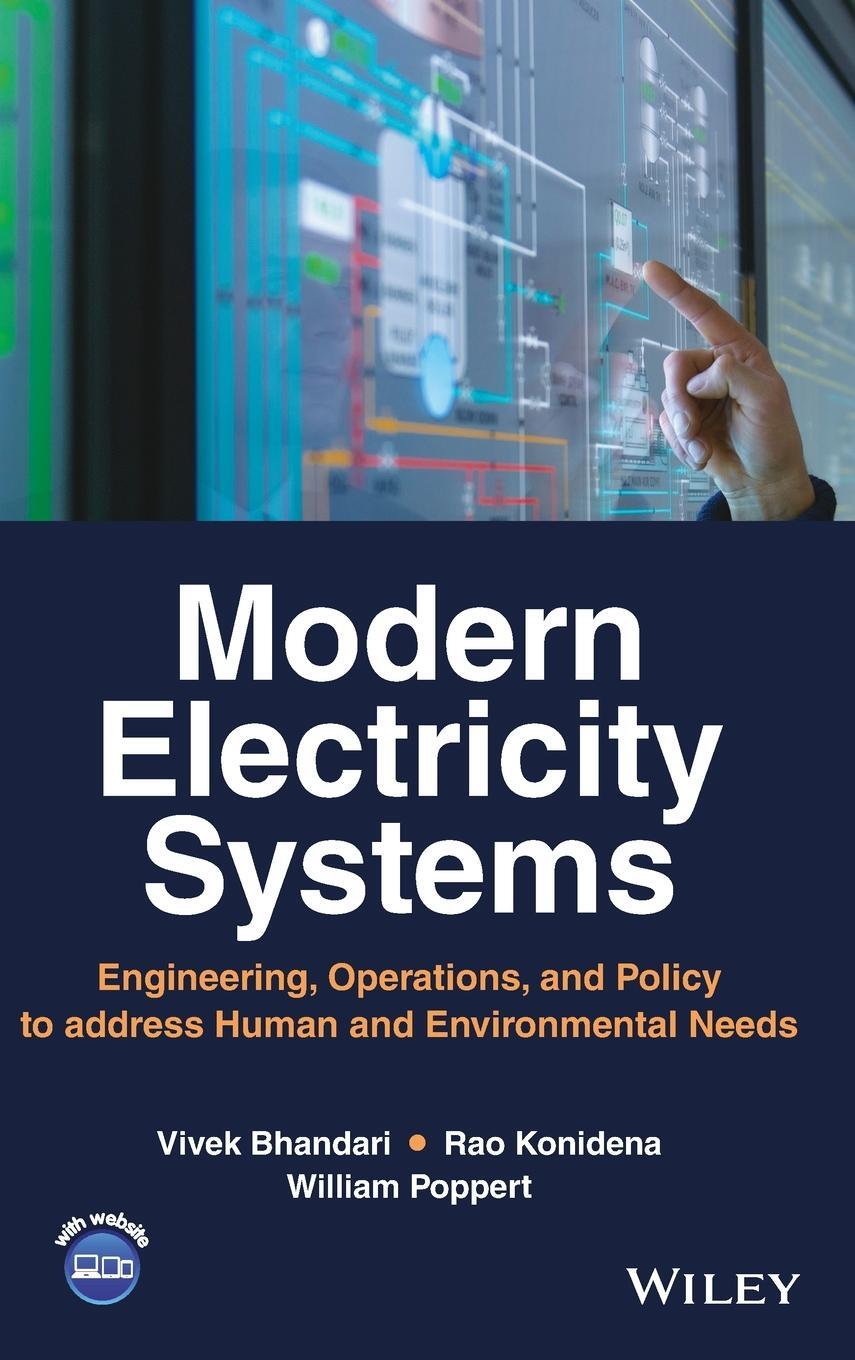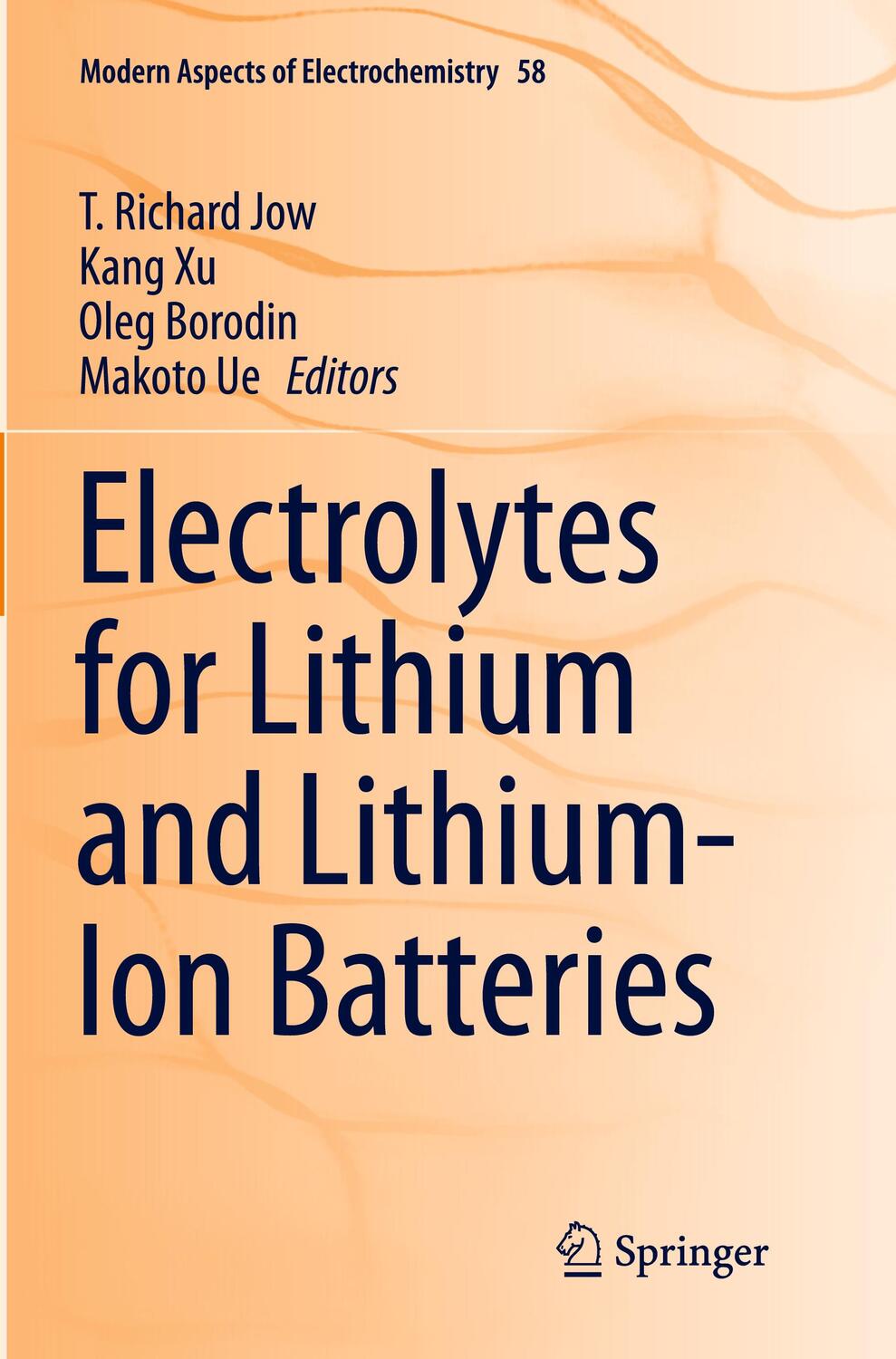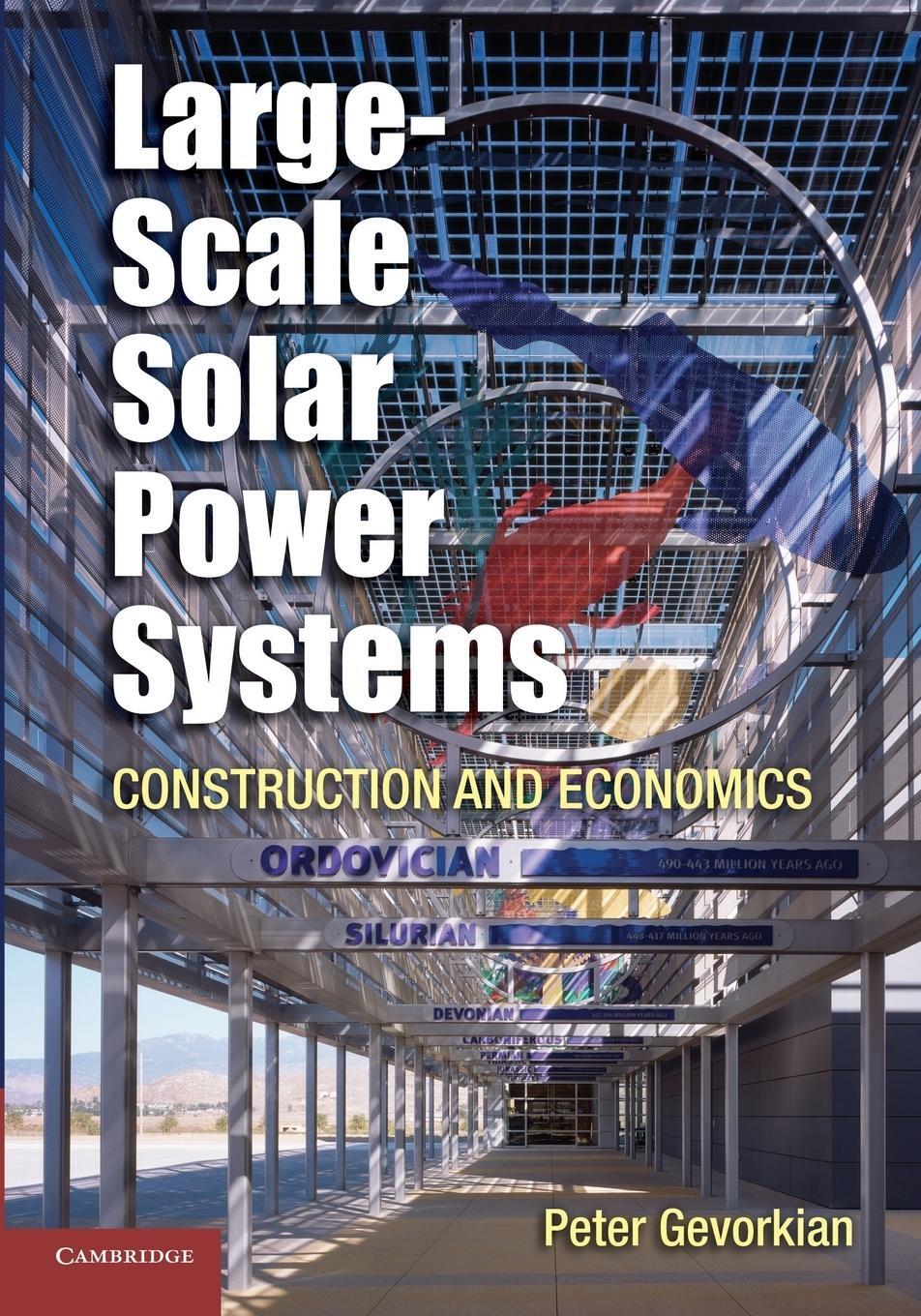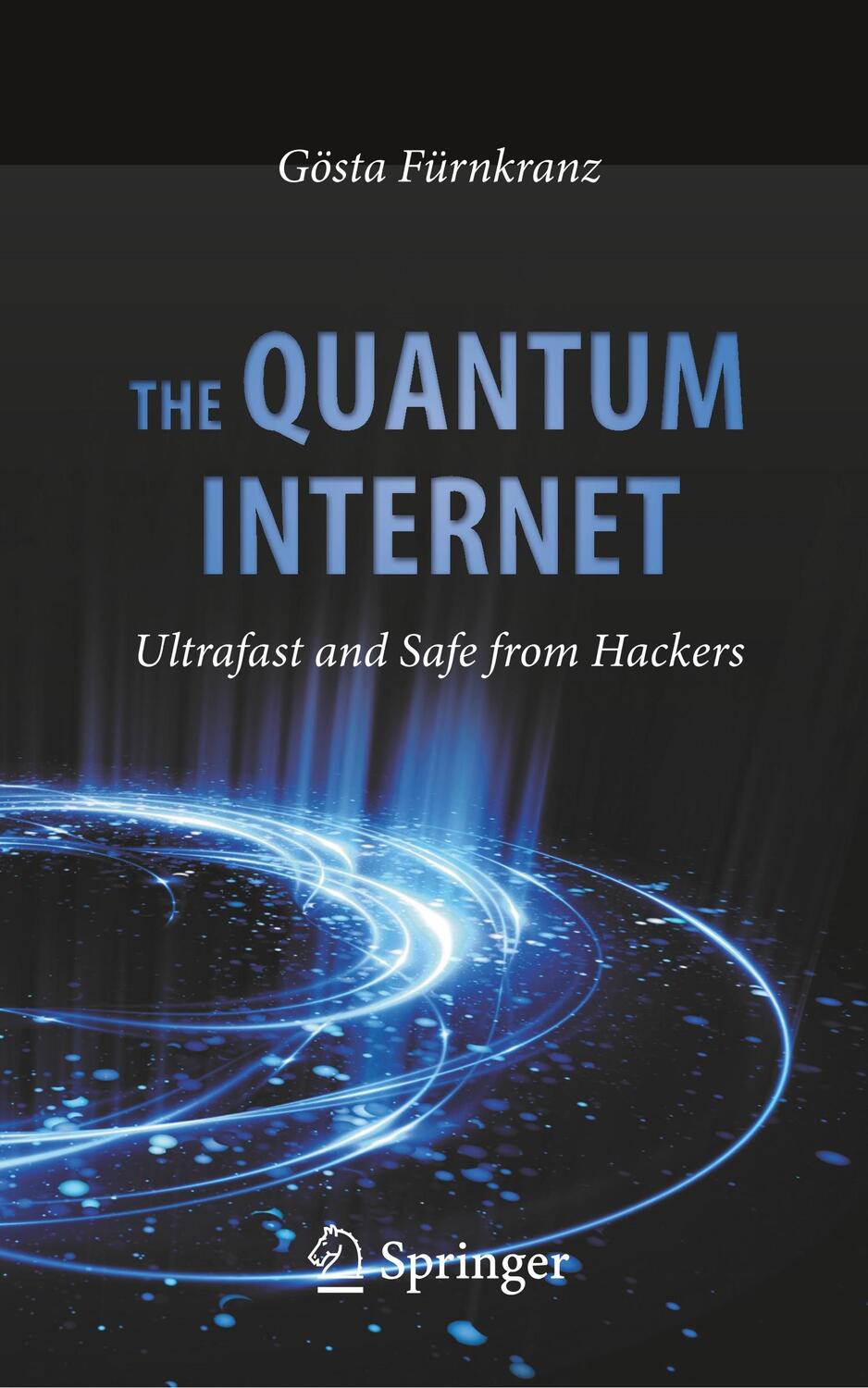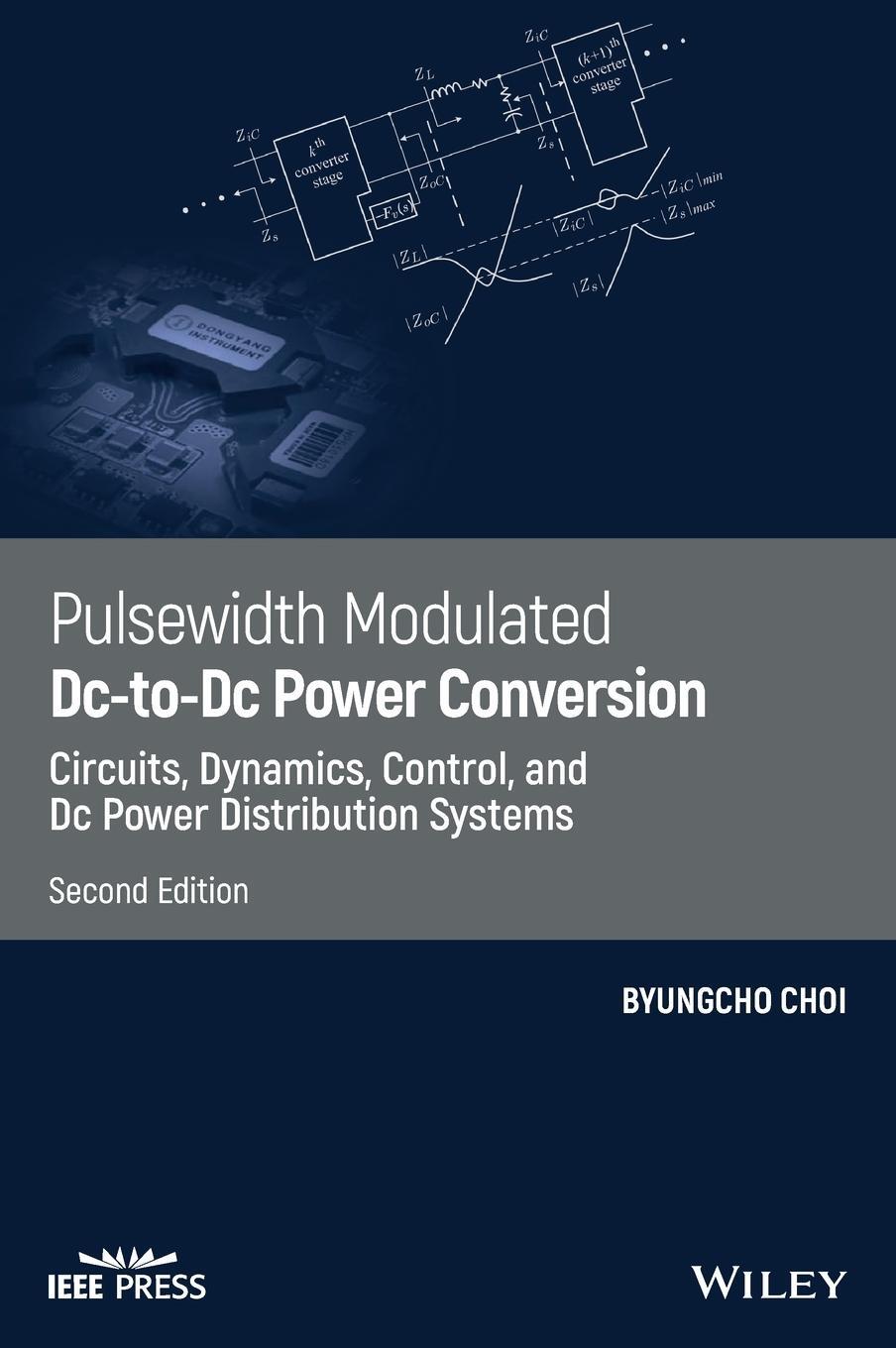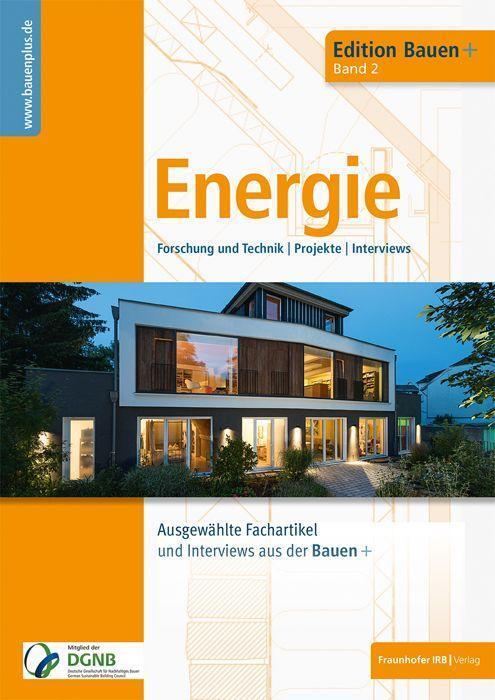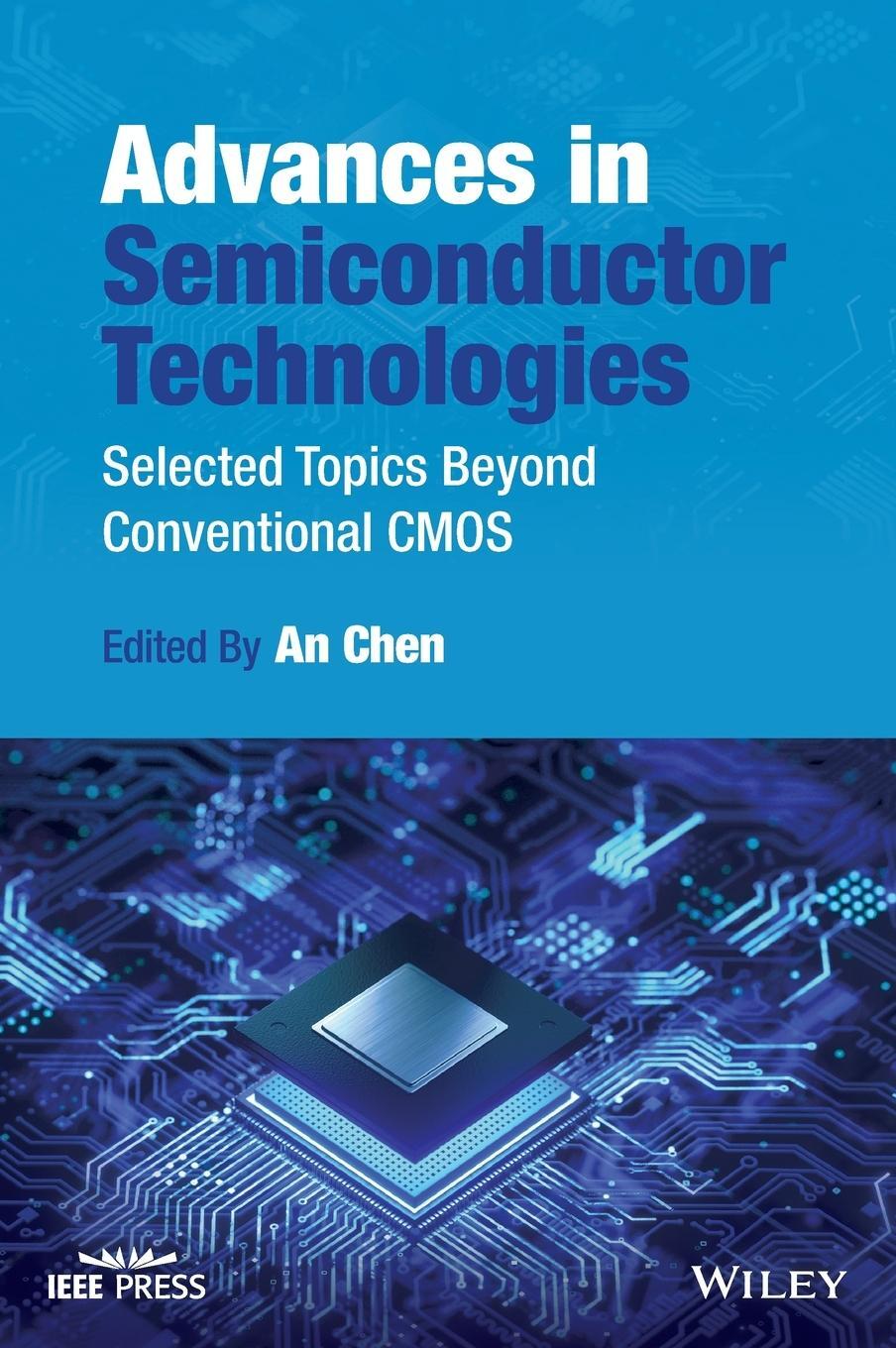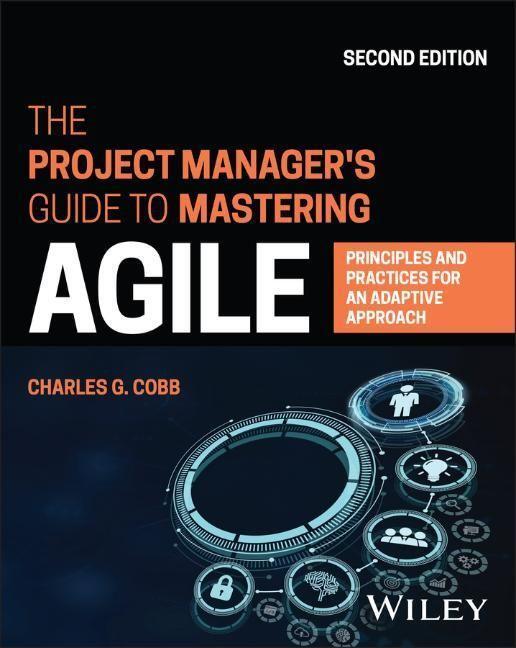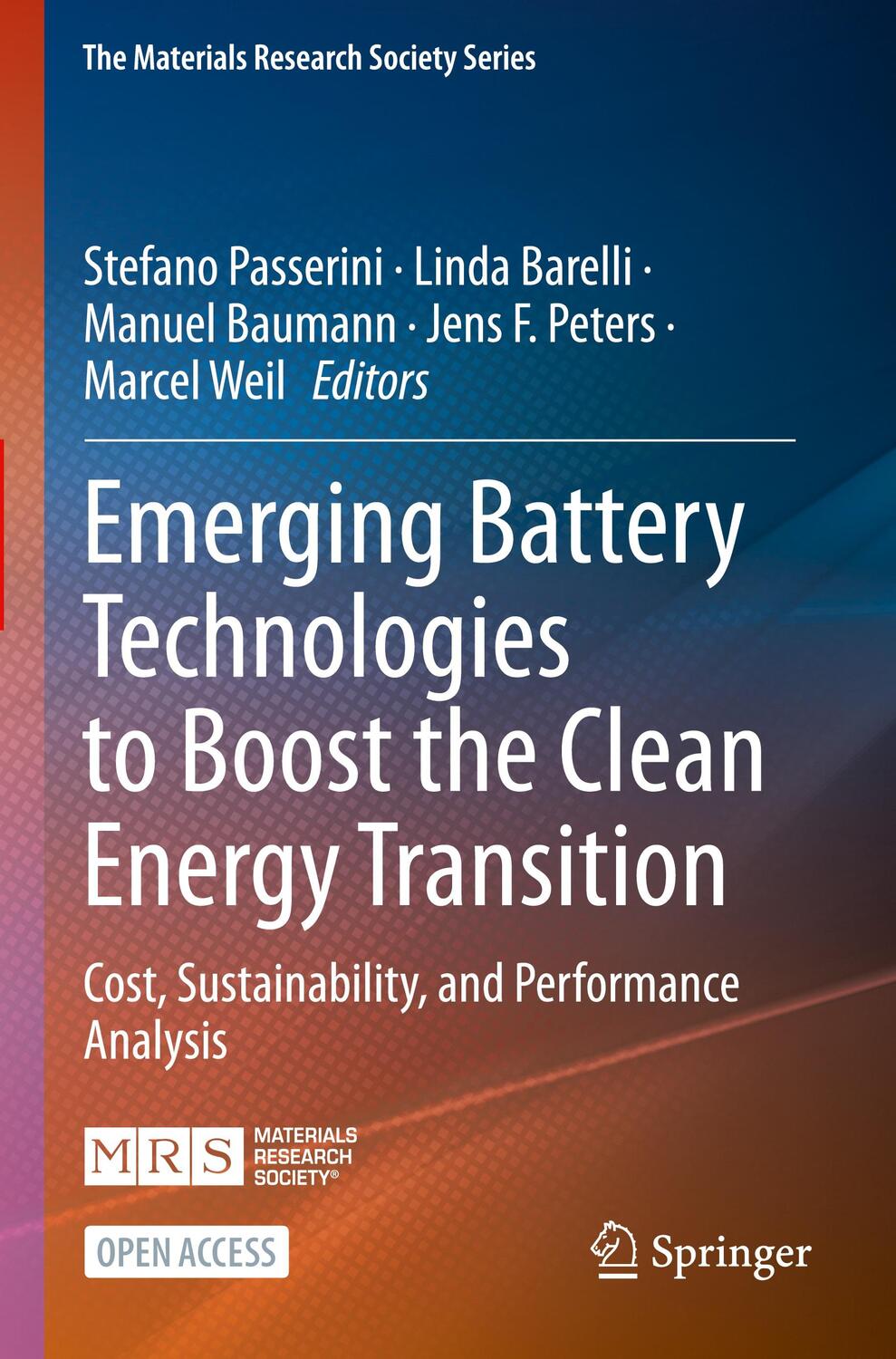134,50 €*
Versandkostenfrei per Post / DHL
Aktuell nicht verfügbar
Awarded "The Best Book for Energy Engineers" by The American Energy Society 2023
A welcome textbook instructing on many current aspects of energy generation, transmission, distribution, and consumption
The importance of a well-informed group of individuals in charge of energy production and use is essential to create a sustainable and greener tomorrow. Technologies and costs are rapidly changing, and environmental goals widely debated in this book. The future of energy is at a crossroads. In addition, energy and technology poverty affects as much as 25% of the world's population. Having the correct set of "tools"--a basic understanding of modern electrical systems--is essential, not just for engineers but for our leaders and decision-makers.
With decades of experience in industry and academia behind them, the team of authors in Modern Electricity Systems offers a "toolbox" from which the reader will learn what is essential to make informed decisions. As such, this textbook provides an introduction to the fundamentals of how electricity is generated, financed, regulated, rationed, and stored - with consideration not just of the current status of these issues but a glance at what the next decade may hold. Without this basic level of comprehension, the growing global impact and social issues can be discussed and advocated for, but real change in this sector can only be achieved through understanding the systems.
Modern Electricity Systems readers will also find:
* Support to create a course on energy transition and energy policy for sustainable development
* International modern day case studies, that represent the most current and essential topics, to illustrate key concepts, as well as ones focused on the United States
* Sample problem sets that bring together essential ideas learned from each chapter
* A textbook written by a team of working professionals with international experience in real-world applications of policy, engineering, and operations
Modern Electricity Systems is a helpful reference for graduate and advanced undergraduate students and researchers, policymakers, environmentalists, humanitarians, business leaders, and decision-makers in all three sectors of electricity operations, engineering, and policy matters.
Awarded "The Best Book for Energy Engineers" by The American Energy Society 2023
A welcome textbook instructing on many current aspects of energy generation, transmission, distribution, and consumption
The importance of a well-informed group of individuals in charge of energy production and use is essential to create a sustainable and greener tomorrow. Technologies and costs are rapidly changing, and environmental goals widely debated in this book. The future of energy is at a crossroads. In addition, energy and technology poverty affects as much as 25% of the world's population. Having the correct set of "tools"--a basic understanding of modern electrical systems--is essential, not just for engineers but for our leaders and decision-makers.
With decades of experience in industry and academia behind them, the team of authors in Modern Electricity Systems offers a "toolbox" from which the reader will learn what is essential to make informed decisions. As such, this textbook provides an introduction to the fundamentals of how electricity is generated, financed, regulated, rationed, and stored - with consideration not just of the current status of these issues but a glance at what the next decade may hold. Without this basic level of comprehension, the growing global impact and social issues can be discussed and advocated for, but real change in this sector can only be achieved through understanding the systems.
Modern Electricity Systems readers will also find:
* Support to create a course on energy transition and energy policy for sustainable development
* International modern day case studies, that represent the most current and essential topics, to illustrate key concepts, as well as ones focused on the United States
* Sample problem sets that bring together essential ideas learned from each chapter
* A textbook written by a team of working professionals with international experience in real-world applications of policy, engineering, and operations
Modern Electricity Systems is a helpful reference for graduate and advanced undergraduate students and researchers, policymakers, environmentalists, humanitarians, business leaders, and decision-makers in all three sectors of electricity operations, engineering, and policy matters.
Vivek Bhandari, Ph.D., PE. SMIEEE is a Director at a multinational software company. He is responsible for providing end-to-end global leadership for the software solutions related to Distributed Energy Resource Management.
Rao Konidena, MBA founded Rakon Energy LLC, USA, and most recently was the Midcontinent ISO (MISO) as Principal Advisor for Policy Studies, working on energy storage and distributed energy resources.
William (Bill) Poppert, MBA is a 30-year veteran of the energy sector based in the US, where he has worked, in the US and internationally, in the operation, design, financing, and development of energy projects programs and businesses.
Acknowledgments
About the Authors
1 Essentials of Power and Control
Abstract 2
Keywords 2
1.1 Introduction 3
1.2 Basic Principles of Power and Control 4
1.2.1 Energy and Power 5
1.2.2 Voltage, Current, and Impedance 8
1.2.3 Alternating Current Vs. Direct Current 10
1.2.4 Single Phase vs. Multiphase 13
1.2.5 Active, Reactive, Apparent Power and Power Factor 15
1.3 Control Overview 19
1.4 Power Generation and Grid: Operation and Control 21
1.5 Generation Dispatch and Balancing the System 23
1.6 Transmission and Distribution Network 24
1.6.1 Transmission Network 25
1.6.2 Distribution System 26
1.6.3 One Line or Single Line Diagram 27
1.7 Wholesale and Retails Markets 28
1.7.1 Wholesale Market 29
1.7.2 Retail Market 34
1.8 Smart Meters 40
1.9 Distributed Generation and Grid Edge 43
1.9.1 Microgrids in Kenya and Other Locations 43
1.9.2 Microgrids in the United States 44
1.9.3 Flexibility Services in Europe 45
1.9.4 Virtual Power Plants in Australia 46
1.10 Changes in the Grid 46
1.11 Visioning 47
Index 48
2 Basic Discounting and Levelized Costs Concepts
Abstract 3
Keywords 3
2.1 Introduction 3
2.2 Fundamentals 6
2.2.1 Cashflow and Discount Rate 6
2.2.2 Market Failures and Externalities 9
2.2.3 Tax and Subsidy 11
2.2.3.1 Carbon Tax 12
2.2.3.2 Subsidy 14
2.2.4 Present Value and Future Value 17
2.2.5 Risk and Risk Management 19
2.2.5.1 Identification 20
2.2.5.2 Assessment 21
2.2.5.3 Mitigation 21
2.3 Simple Applications 23
2.3.1 Simple Payback 24
2.3.2 Return on Investment 24
2.3.3 Gross Margin 25
2.3.4 Net Present Value 26
2.3.5 Levelized Costs 26
2.3.7 Lifecycle cost 28
2.3.8 Supply and Demand 29
2.4 Extended Applications 32
2.4.1 Wholesale market 32
2.4.2 Retail Market 39
2.4.3 Local Electricity Market 41
2.5 Visioning 42
Index 43
3 Modern Electrical Engineering Systems, Current Events," Crises," and Tradeoffs
Abstract: 2
Keywords: 2
3.1 Introduction: Tradeoffs, Crises, and Notable Current Events 2
3.2 Current Events, Crises, and Tradeoffs 5
3.2.1 Extreme weather and Climate events need Resilient and Diverse grid - Texas Power Crisis 2021 6
3.2.2 Wholesale Electricity Markets and their manipulations - big banks to wall street darlings 9
3.2.3 Systematic Energy Crisis - Nepal's Energy Poverty 12
[...]ope and Natural Gas: Increasing dependence on single resource -. Policies to achieve clean energy targets are not simple. 16
3.2.5 Pandemic's Impacts on electrical systems - Energy supply crunch and sudden change in electrical demand. 18
3.3 Tradeoffs 19
3.3.1 Green Energy Choices vs. Conventional Energy Choices 20
3.3.2 Regulation vs. Deregulation 24
3.3.3 Reliability vs. Costs 27
3.4 Crises and Tradeoffs mapping 29
3.5 Visioning 33
Index 36
4 Introduction to Influence of Wholesale Energy Markets in policy and pricing discussions
Abstract 3
Keywords 3
4.1. Introduction 3
4.1.1. True market proponents believe in market-based solutions to enable energy transformation 4
4.1.2. It is energy markets, not electricity markets 4
4.1.3. The United States Regional Transmission Organization developments 5
4.1.4. International energy market developments 5
4.1.5. Don't expect a policy to lead energy markets 6
4.1.6. Finally, energy markets are fascinating and complex 6
4.2. Do energy markets influence policy? 7
4.3. How does policy benefit market operations? 8
4.4. Joining an energy market is a decision not to be taken lightly ("On-Ramp" of the market setup costs) 8
4.4.1. The benefit to cost studies 9
4.4.2. Energy Imbalance Markets 9
4.4.3. Value Proposition studies 11
4.4.4. Regulatory Compliance and Audits 12
4.5. States with multiple RTOs 13
4.5.1. Texas has 3 RTOs - Electric Reliability Council Of Texas, Southwest Power Pool, and Midcontinent Independent System Operator 13
4.5.2. Missouri - Southwest Power Pool and Midcontinent Independent System Operator 14
4.5.3. Illinois - Pennsylvania-New Jersey-Maryland Interconnection and Midcontinent Independent System Operator 14
4.5.4. States with multiple RTOs creates "Seams" issues 15
4.5.5. Joint and Common Market - Pennsylvania-New Jersey-Maryland Interconnection and Midcontinent Independent System Operator effort 15
4.6. Other organized wholesale markets 15
4.6.1. Australia 16
4.6.2. Germany 18
4.6.3. Vietnam 19
4.6.4. Nepal (Potential) 20
4.6.5. Africa (Potential) 21
4.7. Leaving energy markets is a decision not to be taken lightly ("Off-Ramp") 23
4.7.1. First Energy and Duke Energy Ohio left MISO 23
4.7.2. New Jersey threatened to leave PJM's Capacity Market 24
4.8. States or Countries without RTOs 24
4.8.1. Who maintains reliability? 25
4.8.2. How are capacity needs assessed? 25
4.8.3. How are transmission needs assessed? 26
4.8.4. Capacity Benefit Margin is relevant in states without RTOs similar to locational capacity needs in states with RTOs 27
4.8.5. Some transmission planning concepts continue to be relevant for the market to non-market regional purposes 28
4.8.6. And energy markets added new metrics to continue to show the importance of transmission investments 29
4.8.7. Transmission planning and capacity markets are intertwined 30
4.9. Cost Allocation of Transmission projects 31
4.9.1. Reliability Project Cost Calculation 33
4.9.2. Economic Project Cost Calculation 33
4.9.3. Adjusted Production Cost Calculation 35
4.9.4. Public Policy Project Cost Calculation 36
4.10. Visioning - 37
INDEX 39
5 How to put together a regulatory policy by following a process
5.1. Introduction 3
5.2. What is a regulatory policy? 4
5.2.2. What about the influence on energy policy and regulatory actions in developing countries and fragile economies? 7
5.3. Different flavors of regulatory policy in the electric utility industry 8
5.3.1. A utility's regulatory policy for emerging technology is going to look different than the utility's strategy for an existing technology 8
5.3.2. The regulatory policy is going to look different in regions that have organized markets than the regions that don't 10
5.3.3. Regulatory policy for an IOU is different compared to a CCA 10
5.3.4. Regulatory policy for consumer advocates is going to be different than utilities 11
5.3.5. A utility's regulatory policy for industrial customers is different than consumer advocates or residential Customers 11
5.3.6. The regulatory policy for an Independent Transmission Company (ITC) is different than a Transmission Owner (TO) 11
5.3.7. Regulatory policy for a specific supply-side fuel such as Nuclear fuel is in a class by itself 12
5.3.8. A demand-side regulatory policy such as Demand Response 12
5.3.9. A regulatory policy with a compliance purpose 13
5.3.10. A technology provider's regulatory policy is going to look different than a national laboratory's policy 13
5.3.11. Regulatory policy drives partnerships 14
5.3.12. So, how do we know the regulatory policy is working? 14
5.4. There are five steps in any regulatory policy process 15
5.4.1. First, understand the customers of this process 16
5.4.2. Second, understand the output from the regulatory process. 16
5.4.3. Third, understand the regulatory process. 18
5.4.4. Fourth, understand the Inputs to the process. 19
5.4.5. Fifth, understand the Stakeholders in this regulatory process. 20
5.4.6. Applying the five steps to the Dynamic Line Rating (DLR) policy context 20
5.4.7. Applying the five steps to the Australian policy context 21
5.5. How does regulatory policy drive legislative affairs? 21
5.6. Additional examples of regulatory policy driving regulatory success 22
5.6.1. Salvation Army's Heat program 23
5.6.2. Example of IOU listening to stakeholder comments in Integrated Resource Planning (IRP) proceedings 23
5.6.3. Narrative about Citizen and Industry group influence on renewable standards 24
5.7. How does regulatory policy drive individual participation in industry communications? 26
5.7.1. How do you know you had a successful event? 27
5.8. Visioning 29
INDEX 30
6 How institutions shape energy policy
Abstract 3
Keywords 3
6.1. Introduction 3
6.2. Strategic Action Field Framework for Policy 7
6.3. What are the major institutions in US energy policy? 10
6.3.1. US Congress 12
6.3.2. Department of Energy (DOE) 16
6.3.3. Federal Energy Regulatory Commission (FERC) and Independent System Operator (ISO) 18
6.3.4. Independent Market Monitors 20
6.3.5. Energy Information Administration (EIA) 21
6.3.6. North American Electric Reliability Corporation (NERC) 22
6.3.7. Federal Bureau of Ocean Energy Management (BOEM) 23
6.3.8. State Legislatures (Senate and House) 24
6.3.9. Public Utility Commissions (PUC) 24
6.3.10. National Association of Utility Regulatory Commissioners (NARUC) 26
6.3.11. The role of local city governments 26
6.3.12. Energy advocates role in US policy 27
6.3.13. Stakeholder working group's role in setting US energy policy 28
6.3.14. Associations & Alliances role in policy 30
6.3.15. Summary of US institutions 31
6.4. What are the major institutions in international energy policy? 32
6.4.1. Examples from strong economies 33
[...]opean Union (EU) 33
[...]opean Commission (EC) 33
6.4.1.3. International Energy Agency (IEA) 33
6.4.1.4. World Energy Council (WEC) 34
[...]opean Network of Transmission System Operators for Electricity (ENTSO-E) 34
6.4.1.6. Australia 35
6.4.1.7 Energy Regulators Regional Association (ERRA) 39
6.4.1.8. China 39
6.4.2. Examples from Fragile Economies 41
6.4.2.1 Nepal 41
6.4.2.2 Democratic Republic of the Congo 44
6.4.3. Examples from the private sector 45
6.4.12. Summary of International institutions 46
6.5. The role of Climate Change/Low Carbon/Renewable Energy regulations, goals, and pledges in setting policy 47
6.6. The role of courts 48
6.7. Visioning 50
INDEX 53
7 How does the power system work?
Abstract: 3
Keywords: 3
7.1 Introduction 3
7.2 Guiding Principles for a Power System 5
7.3 Schematic of the modern...
| Erscheinungsjahr: | 2022 |
|---|---|
| Genre: | Geschichte |
| Rubrik: | Geisteswissenschaften |
| Medium: | Buch |
| Seiten: | 400 |
| Inhalt: | 400 S. |
| ISBN-13: | 9781119793496 |
| ISBN-10: | 1119793491 |
| Sprache: | Englisch |
| Einband: | Gebunden |
| Autor: |
Bhandari, Vivek
Konidena, Rao Poppert, William |
| Hersteller: | Wiley |
| Maße: | 235 x 157 x 26 mm |
| Von/Mit: | Vivek Bhandari (u. a.) |
| Erscheinungsdatum: | 08.08.2022 |
| Gewicht: | 0,733 kg |
Vivek Bhandari, Ph.D., PE. SMIEEE is a Director at a multinational software company. He is responsible for providing end-to-end global leadership for the software solutions related to Distributed Energy Resource Management.
Rao Konidena, MBA founded Rakon Energy LLC, USA, and most recently was the Midcontinent ISO (MISO) as Principal Advisor for Policy Studies, working on energy storage and distributed energy resources.
William (Bill) Poppert, MBA is a 30-year veteran of the energy sector based in the US, where he has worked, in the US and internationally, in the operation, design, financing, and development of energy projects programs and businesses.
Acknowledgments
About the Authors
1 Essentials of Power and Control
Abstract 2
Keywords 2
1.1 Introduction 3
1.2 Basic Principles of Power and Control 4
1.2.1 Energy and Power 5
1.2.2 Voltage, Current, and Impedance 8
1.2.3 Alternating Current Vs. Direct Current 10
1.2.4 Single Phase vs. Multiphase 13
1.2.5 Active, Reactive, Apparent Power and Power Factor 15
1.3 Control Overview 19
1.4 Power Generation and Grid: Operation and Control 21
1.5 Generation Dispatch and Balancing the System 23
1.6 Transmission and Distribution Network 24
1.6.1 Transmission Network 25
1.6.2 Distribution System 26
1.6.3 One Line or Single Line Diagram 27
1.7 Wholesale and Retails Markets 28
1.7.1 Wholesale Market 29
1.7.2 Retail Market 34
1.8 Smart Meters 40
1.9 Distributed Generation and Grid Edge 43
1.9.1 Microgrids in Kenya and Other Locations 43
1.9.2 Microgrids in the United States 44
1.9.3 Flexibility Services in Europe 45
1.9.4 Virtual Power Plants in Australia 46
1.10 Changes in the Grid 46
1.11 Visioning 47
Index 48
2 Basic Discounting and Levelized Costs Concepts
Abstract 3
Keywords 3
2.1 Introduction 3
2.2 Fundamentals 6
2.2.1 Cashflow and Discount Rate 6
2.2.2 Market Failures and Externalities 9
2.2.3 Tax and Subsidy 11
2.2.3.1 Carbon Tax 12
2.2.3.2 Subsidy 14
2.2.4 Present Value and Future Value 17
2.2.5 Risk and Risk Management 19
2.2.5.1 Identification 20
2.2.5.2 Assessment 21
2.2.5.3 Mitigation 21
2.3 Simple Applications 23
2.3.1 Simple Payback 24
2.3.2 Return on Investment 24
2.3.3 Gross Margin 25
2.3.4 Net Present Value 26
2.3.5 Levelized Costs 26
2.3.7 Lifecycle cost 28
2.3.8 Supply and Demand 29
2.4 Extended Applications 32
2.4.1 Wholesale market 32
2.4.2 Retail Market 39
2.4.3 Local Electricity Market 41
2.5 Visioning 42
Index 43
3 Modern Electrical Engineering Systems, Current Events," Crises," and Tradeoffs
Abstract: 2
Keywords: 2
3.1 Introduction: Tradeoffs, Crises, and Notable Current Events 2
3.2 Current Events, Crises, and Tradeoffs 5
3.2.1 Extreme weather and Climate events need Resilient and Diverse grid - Texas Power Crisis 2021 6
3.2.2 Wholesale Electricity Markets and their manipulations - big banks to wall street darlings 9
3.2.3 Systematic Energy Crisis - Nepal's Energy Poverty 12
[...]ope and Natural Gas: Increasing dependence on single resource -. Policies to achieve clean energy targets are not simple. 16
3.2.5 Pandemic's Impacts on electrical systems - Energy supply crunch and sudden change in electrical demand. 18
3.3 Tradeoffs 19
3.3.1 Green Energy Choices vs. Conventional Energy Choices 20
3.3.2 Regulation vs. Deregulation 24
3.3.3 Reliability vs. Costs 27
3.4 Crises and Tradeoffs mapping 29
3.5 Visioning 33
Index 36
4 Introduction to Influence of Wholesale Energy Markets in policy and pricing discussions
Abstract 3
Keywords 3
4.1. Introduction 3
4.1.1. True market proponents believe in market-based solutions to enable energy transformation 4
4.1.2. It is energy markets, not electricity markets 4
4.1.3. The United States Regional Transmission Organization developments 5
4.1.4. International energy market developments 5
4.1.5. Don't expect a policy to lead energy markets 6
4.1.6. Finally, energy markets are fascinating and complex 6
4.2. Do energy markets influence policy? 7
4.3. How does policy benefit market operations? 8
4.4. Joining an energy market is a decision not to be taken lightly ("On-Ramp" of the market setup costs) 8
4.4.1. The benefit to cost studies 9
4.4.2. Energy Imbalance Markets 9
4.4.3. Value Proposition studies 11
4.4.4. Regulatory Compliance and Audits 12
4.5. States with multiple RTOs 13
4.5.1. Texas has 3 RTOs - Electric Reliability Council Of Texas, Southwest Power Pool, and Midcontinent Independent System Operator 13
4.5.2. Missouri - Southwest Power Pool and Midcontinent Independent System Operator 14
4.5.3. Illinois - Pennsylvania-New Jersey-Maryland Interconnection and Midcontinent Independent System Operator 14
4.5.4. States with multiple RTOs creates "Seams" issues 15
4.5.5. Joint and Common Market - Pennsylvania-New Jersey-Maryland Interconnection and Midcontinent Independent System Operator effort 15
4.6. Other organized wholesale markets 15
4.6.1. Australia 16
4.6.2. Germany 18
4.6.3. Vietnam 19
4.6.4. Nepal (Potential) 20
4.6.5. Africa (Potential) 21
4.7. Leaving energy markets is a decision not to be taken lightly ("Off-Ramp") 23
4.7.1. First Energy and Duke Energy Ohio left MISO 23
4.7.2. New Jersey threatened to leave PJM's Capacity Market 24
4.8. States or Countries without RTOs 24
4.8.1. Who maintains reliability? 25
4.8.2. How are capacity needs assessed? 25
4.8.3. How are transmission needs assessed? 26
4.8.4. Capacity Benefit Margin is relevant in states without RTOs similar to locational capacity needs in states with RTOs 27
4.8.5. Some transmission planning concepts continue to be relevant for the market to non-market regional purposes 28
4.8.6. And energy markets added new metrics to continue to show the importance of transmission investments 29
4.8.7. Transmission planning and capacity markets are intertwined 30
4.9. Cost Allocation of Transmission projects 31
4.9.1. Reliability Project Cost Calculation 33
4.9.2. Economic Project Cost Calculation 33
4.9.3. Adjusted Production Cost Calculation 35
4.9.4. Public Policy Project Cost Calculation 36
4.10. Visioning - 37
INDEX 39
5 How to put together a regulatory policy by following a process
5.1. Introduction 3
5.2. What is a regulatory policy? 4
5.2.2. What about the influence on energy policy and regulatory actions in developing countries and fragile economies? 7
5.3. Different flavors of regulatory policy in the electric utility industry 8
5.3.1. A utility's regulatory policy for emerging technology is going to look different than the utility's strategy for an existing technology 8
5.3.2. The regulatory policy is going to look different in regions that have organized markets than the regions that don't 10
5.3.3. Regulatory policy for an IOU is different compared to a CCA 10
5.3.4. Regulatory policy for consumer advocates is going to be different than utilities 11
5.3.5. A utility's regulatory policy for industrial customers is different than consumer advocates or residential Customers 11
5.3.6. The regulatory policy for an Independent Transmission Company (ITC) is different than a Transmission Owner (TO) 11
5.3.7. Regulatory policy for a specific supply-side fuel such as Nuclear fuel is in a class by itself 12
5.3.8. A demand-side regulatory policy such as Demand Response 12
5.3.9. A regulatory policy with a compliance purpose 13
5.3.10. A technology provider's regulatory policy is going to look different than a national laboratory's policy 13
5.3.11. Regulatory policy drives partnerships 14
5.3.12. So, how do we know the regulatory policy is working? 14
5.4. There are five steps in any regulatory policy process 15
5.4.1. First, understand the customers of this process 16
5.4.2. Second, understand the output from the regulatory process. 16
5.4.3. Third, understand the regulatory process. 18
5.4.4. Fourth, understand the Inputs to the process. 19
5.4.5. Fifth, understand the Stakeholders in this regulatory process. 20
5.4.6. Applying the five steps to the Dynamic Line Rating (DLR) policy context 20
5.4.7. Applying the five steps to the Australian policy context 21
5.5. How does regulatory policy drive legislative affairs? 21
5.6. Additional examples of regulatory policy driving regulatory success 22
5.6.1. Salvation Army's Heat program 23
5.6.2. Example of IOU listening to stakeholder comments in Integrated Resource Planning (IRP) proceedings 23
5.6.3. Narrative about Citizen and Industry group influence on renewable standards 24
5.7. How does regulatory policy drive individual participation in industry communications? 26
5.7.1. How do you know you had a successful event? 27
5.8. Visioning 29
INDEX 30
6 How institutions shape energy policy
Abstract 3
Keywords 3
6.1. Introduction 3
6.2. Strategic Action Field Framework for Policy 7
6.3. What are the major institutions in US energy policy? 10
6.3.1. US Congress 12
6.3.2. Department of Energy (DOE) 16
6.3.3. Federal Energy Regulatory Commission (FERC) and Independent System Operator (ISO) 18
6.3.4. Independent Market Monitors 20
6.3.5. Energy Information Administration (EIA) 21
6.3.6. North American Electric Reliability Corporation (NERC) 22
6.3.7. Federal Bureau of Ocean Energy Management (BOEM) 23
6.3.8. State Legislatures (Senate and House) 24
6.3.9. Public Utility Commissions (PUC) 24
6.3.10. National Association of Utility Regulatory Commissioners (NARUC) 26
6.3.11. The role of local city governments 26
6.3.12. Energy advocates role in US policy 27
6.3.13. Stakeholder working group's role in setting US energy policy 28
6.3.14. Associations & Alliances role in policy 30
6.3.15. Summary of US institutions 31
6.4. What are the major institutions in international energy policy? 32
6.4.1. Examples from strong economies 33
[...]opean Union (EU) 33
[...]opean Commission (EC) 33
6.4.1.3. International Energy Agency (IEA) 33
6.4.1.4. World Energy Council (WEC) 34
[...]opean Network of Transmission System Operators for Electricity (ENTSO-E) 34
6.4.1.6. Australia 35
6.4.1.7 Energy Regulators Regional Association (ERRA) 39
6.4.1.8. China 39
6.4.2. Examples from Fragile Economies 41
6.4.2.1 Nepal 41
6.4.2.2 Democratic Republic of the Congo 44
6.4.3. Examples from the private sector 45
6.4.12. Summary of International institutions 46
6.5. The role of Climate Change/Low Carbon/Renewable Energy regulations, goals, and pledges in setting policy 47
6.6. The role of courts 48
6.7. Visioning 50
INDEX 53
7 How does the power system work?
Abstract: 3
Keywords: 3
7.1 Introduction 3
7.2 Guiding Principles for a Power System 5
7.3 Schematic of the modern...
| Erscheinungsjahr: | 2022 |
|---|---|
| Genre: | Geschichte |
| Rubrik: | Geisteswissenschaften |
| Medium: | Buch |
| Seiten: | 400 |
| Inhalt: | 400 S. |
| ISBN-13: | 9781119793496 |
| ISBN-10: | 1119793491 |
| Sprache: | Englisch |
| Einband: | Gebunden |
| Autor: |
Bhandari, Vivek
Konidena, Rao Poppert, William |
| Hersteller: | Wiley |
| Maße: | 235 x 157 x 26 mm |
| Von/Mit: | Vivek Bhandari (u. a.) |
| Erscheinungsdatum: | 08.08.2022 |
| Gewicht: | 0,733 kg |

